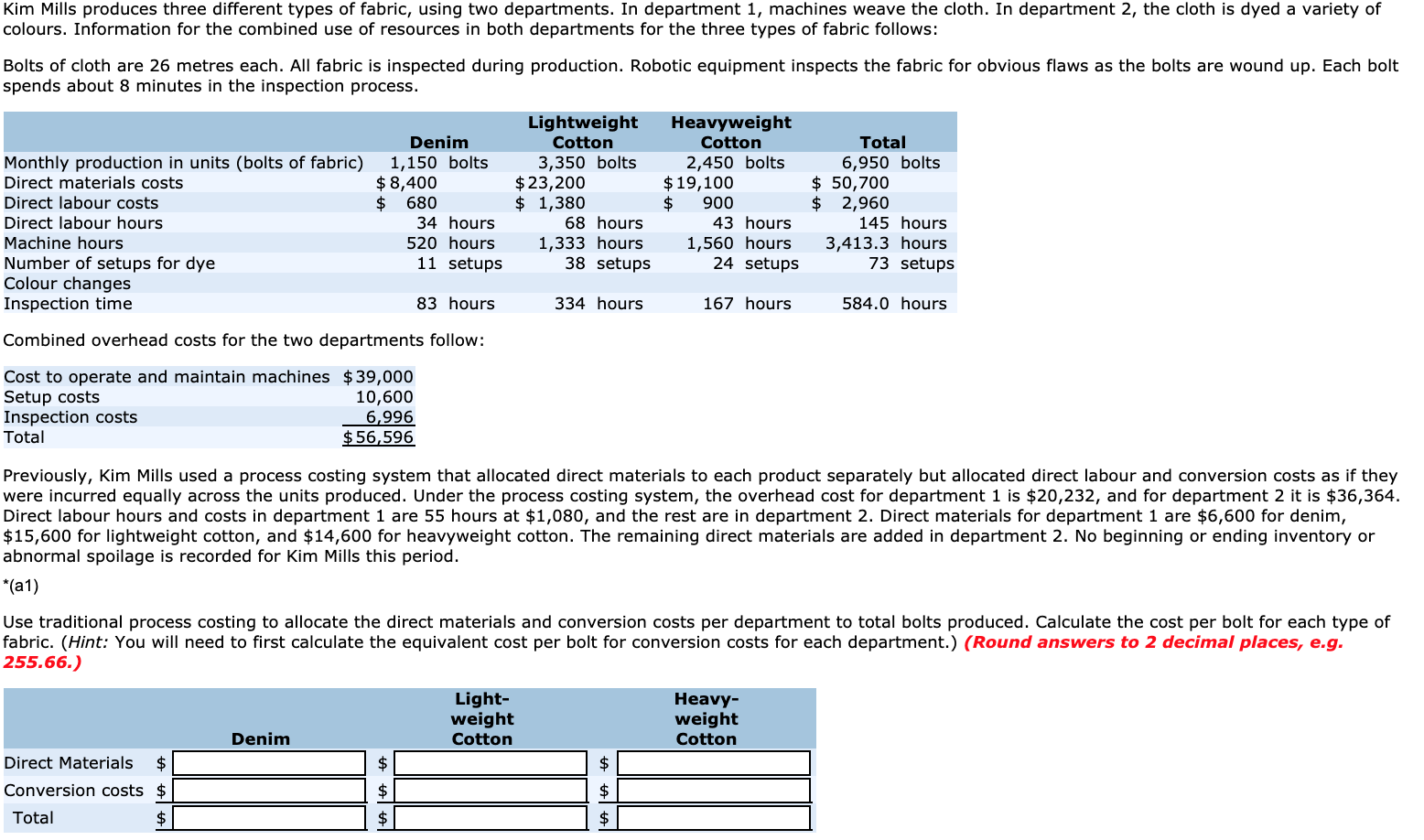Answered step by step
Verified Expert Solution
Question
1 Approved Answer
B. Using activity-based costing, develop a cost per bolt. C. Compare the process costing and ABC results. Identify the products with overstated costs and those

B. Using activity-based costing, develop a cost per bolt.
C. Compare the process costing and ABC results. Identify the products with overstated costs and those with understated costs. Explain why the costs are misstated under traditional process costing.
Kim Mills produces three different types of fabric, using two departments. In department 1, machines weave the cloth. In department 2, the cloth is dyed a variety of colours. Information for the combined use of resources in both departments for the three types of fabric follows: Bolts of cloth are 26 metres each. All fabric is inspected during production. Robotic equipment inspects the fabric for obvious flaws as the bolts are wound up. Each bolt spends about 8 minutes in the inspection process. Lightweight Heavyweight Denim Total Cotton Cotton 3,350 bolts $23,200 1,380 1,150 bolts $8,400 6,950 bolts $50,700 $ 2,960 2,450 bolts $19,100 Monthly production in units (bolts of fabric) Direct materials costs $ 900 43 hours Direct labour costs $ 680 Direct labour hours 34 hours 68 hours 145 hours 1,333 hours 38 setups Machine hours 520 hours 1,560 hours 24 setups 3,413.3 hours 73 setups Number of setups for dye Colour changes Inspection time 11 setups 167 hours 584.0 hours 83 hours 334 hours Combined overhead costs for the two departments follow: Cost to operate and maintain machines $39,000 Setup costs Inspection costs Total 10,600 6,996 $56,596 Previously, Kim Mills used a process costing system that allocated direct materials to each product separately but allocated direct labour and conversion costs as if they were incurred equally across the units produced. Under the process costing system, the overhead cost for department 1 is $20,232, and for department 2 it is $36,364 Direct labour hours and costs in department 1 are 55 hours at $1,080, and the rest are in department 2. Direct materials for department 1 are $6,600 for denim, $15,600 for lightweight cotton, and $14,600 for heavyweight cotton. The remaining direct materials are added in department 2. No beginning or ending inventory or abnormal spoilage is recorded for Kim Mills this period *(a1) Use traditional process costing to allocate the direct materials and conversion costs per department to total bolts produced. Calculate the cost per bolt for each type of fabric. (Hint: You will need to first calculate the equivalent cost per bolt for conversion costs for each department.) (Round answers to 2 decimalplaces, e.g. 255.66.) Heavy weight Light- weight Denim Cotton Cotton Direct Materials $ $ $ Conversion costs $ $ Total $ $ $Step by Step Solution
There are 3 Steps involved in it
Step: 1

Get Instant Access to Expert-Tailored Solutions
See step-by-step solutions with expert insights and AI powered tools for academic success
Step: 2

Step: 3

Ace Your Homework with AI
Get the answers you need in no time with our AI-driven, step-by-step assistance
Get Started


